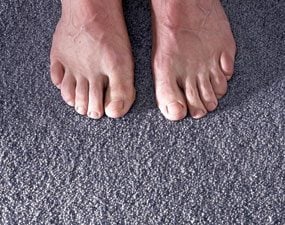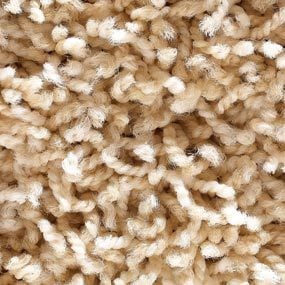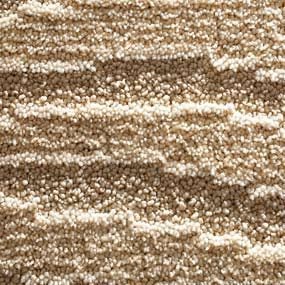How to Choose Carpet
Updated: Feb. 03, 2023Understand your options before you invest

Carpet Overview: Compare carpeting options before making the investment
Shopping for carpet is a lot like shopping for a car. It involves a huge financial investment; all the different types of carpet, styles, colors and brands can make your head spin; and you often end up dealing with high-pressure salespeople. The experience can be so overwhelming that it’s tempting to shop with only a basic color and style in mind and rely on salespeople for recommendations.
Carpeting is one of the largest investments you’ll make in your home. By doing some basic homework, comparison shopping and working with a reputable retailer, you’ll be able to understand the types of carpet that will work best for your home and buy carpeting that fits your needs—and gives you confidence that you’re getting a quality product for a good price.
This article will give you a basic background in types of carpet, carpet styles and quality and discuss the primary things to think about when you’re shopping for new carpeting, like the best carpet for pets and best carpet prices. We’ll give you tips on what to look for as well as what to look out for. We’re going to concentrate on synthetic fibers in this article. Natural fibers like wool are gorgeous, but they’re out of most people’s price range.
Types of carpet: Choose carpet fiber that best fits your needs
Nylon outperforms all other fibers in durability, resilience and easy maintenance. This is a good choice if you want your carpet to last a decade or longer, for high-traffic areas, and in homes with kids and pets (Photo 1). Higher quality nylon fibers are “branded,” and the carpet label will use terms like “100% Mohawk Nylon” or “100% Stainmaster Tactesse.” Lower-quality, “unbranded” nylon fibers are listed simply as “100% nylon.” The strongest and softest type (and most expensive) is 6.6 nylon. Nylon carpet cost is $10 to $45 per sq. yd.
Triexta (brands include Smart-Strand and Sorona) is a newly classified fiber derived partly from corn sugar (Photo 2). It has excellent, permanent anti-stain properties (nylon must be treated with stain protectors over its life span). It also has good resilience, but it’s too soon to tell whether it will match the durability of nylon in high-traffic areas. Because of its superior stain resistance, this is a good choice if you have young kids or pets. Triexta carpet cost is $20 to $45 per sq. yd.
Polyester (also called PET) is stain resistant, very soft and luxurious underfoot, and is available in deep and vibrant colors (Photo 3). However it’s harder to clean, tends to shed and isn’t as durable as nylon. It’s best used in low-traffic areas (like bedrooms) and in households without kids or pets. A nice, cushy choice if you like to exercise on the carpet. Polyester carpet cost is $8 to $18 per sq. yd.
Olefin (polypropylene) is an attractive, inexpensive fiber that’s strong and resists fading, but it’s not as resilient as nylon (Photo 4). It’s most often made into a looped Berber with a nubby weave that conceals dirt. It has good stain, static and mildew resistance. Olefin carpeting is often selected for high-traffic “clean” areas such as family rooms and play areas. Olefin carpet costs $8 to $25 per sq. yd.
Types of carpet: Common carpet styles
The following five photos show general carpet styles or weaves. Keep in mind that they also come in many colors.
The signs of a quality carpet
A salesperson might tell you that certain types of carpet are a good deal, but don’t rely on his or her word alone. Check the label, handle the carpet and ask the salesperson about these signs of quality.
At least a 34- to 40-oz. face weight. This is the number of ounces of fiber per square yard. The range is generally from 20 to 80, and the higher the number, the heavier and more resilient the carpet.
A tuft twist of 5 or higher. Twist is the number of times the tufts are twisted together in a 1-in. length. The higher the number, the more durable the carpet.
A density rating of 2,000 or more. Density is determined by the thickness of the fibers and how tightly packed they are. The thicker and heavier they are, the better quality the carpet and the less susceptible to crushing. Bend the carpet sample backward (Photo). If you can see the backing easily, it’s a low-density (lower quality) carpet.
Is it BCF or staple fiber construction? Carpet fibers can be either Bulked Continuous Filament (BCF) or “staple.” Staple fibers shed more than BCF fibers. This doesn’t affect the long-term quality of the carpet, but it does mean you’ll have to vacuum more often until the initial shedding stops (which can take up to a year), and it can also be an issue for allergy sufferers.
At least a 10-year “texture retention” warranty. This covers how well the fibers return to their original shape after being walked on. Although manufacturers tout their 15- and 25-year warranties, salespeople caution that warranties are seldom honored except in cases of obvious product defects.
How to get the best deal (and avoid being ripped off)
Salespeople have a tendency to “overmeasure” your carpet needs. This means you pay for carpet and pad you don’t use. Get several estimates, compare the yardage numbers, and consider paying an independent carpet installer to measure your home.
A lot of carpet problems stem from poor installation. Bad seaming, a too-thin pad and inadequate stretching can make a carpet look terrible within a few years. If you or a friend knows a great carpet installer, use that person instead of one provided by the carpet dealer. The installer will measure your house, tell you exactly how much carpet and pad to get, recommend a quality dealer, and pick up the carpet and deliver it on installation day. You can save yourself some money on the installation by removing the old carpet and pad yourself. Ask your installer how much you’ll save to see if it’s worthwhile.
Get at least three estimates before settling on the types of carpet that will work best for you. Tell every salesperson that you’ll be getting several estimates, and don’t discuss details about other carpet bids you’ve received.
Have each carpet estimate include a flooring diagram that shows measurements and seam locations.
Get an individual price quote for each aspect of the job, including carpet, pad, delivery, installation, transition metal pieces, furniture moving, stairs, and old carpet and pad removal and disposal. It’s easy to be overcharged if you just get an overall price for the job.
Make sure you’re home on installation day. Get a sample of the carpet and pad you’ve ordered and compare them with the carpet and pad that show up on the truck. In some instances, retailers deliver a lower quality pad or carpet than you’ve paid for.
In a nutshell
Do your research, and make sure a salesperson doesn’t make the decisions for you. Base your carpet and pad decisions on your lifestyle, household occupants (like finding the best carpet for pets and/or kids) and traffic levels. Also consider the desired life span, maintenance requirements, and the looks and price of the carpet. Common sales gimmicks such as “free pad with carpet purchase” can get you cheap pad that can wreck your carpet.
Take the carpet samples you’ve selected to at least three stores and compare prices of similar products. Get every item in your carpet bid priced individually. This will make it easier to compare bids.
Buy the Right Carpet Pad
The quality of carpet pad is determined by density, not thickness. The right pad will extend the life of your carpet. The wrong pad can cut the life of your carpet in half. A good-quality pad will be 3/8 to 1/2 in. thick and have a density/weight rating of at least 6 lbs. (the residential standard). In most cases, cheap, low-density pad will only last a few years before it needs to be replaced. For high-traffic areas, get a thinner pad with a density of 8 lbs. or more. Some carpet manufacturers require a specific type of pad in order to maintain your carpet warranty (such as when the carpet is laid over heated floors). Check the carpet warranty before you buy padding.
Where to Buy Carpet
Visit several retailers, including local, family-owned businesses that survive on customer referrals. Choose the one that will give you the best service, price and guarantee. Be aware that $199 “basic installation specials” often include hundreds of dollars in extra fees for basic installation items like steps, furniture moving, and carpet and pad removal. Carpet retailers located in a mall or other high-rent locations tend to have higher overhead that is passed on to you in higher prices.















